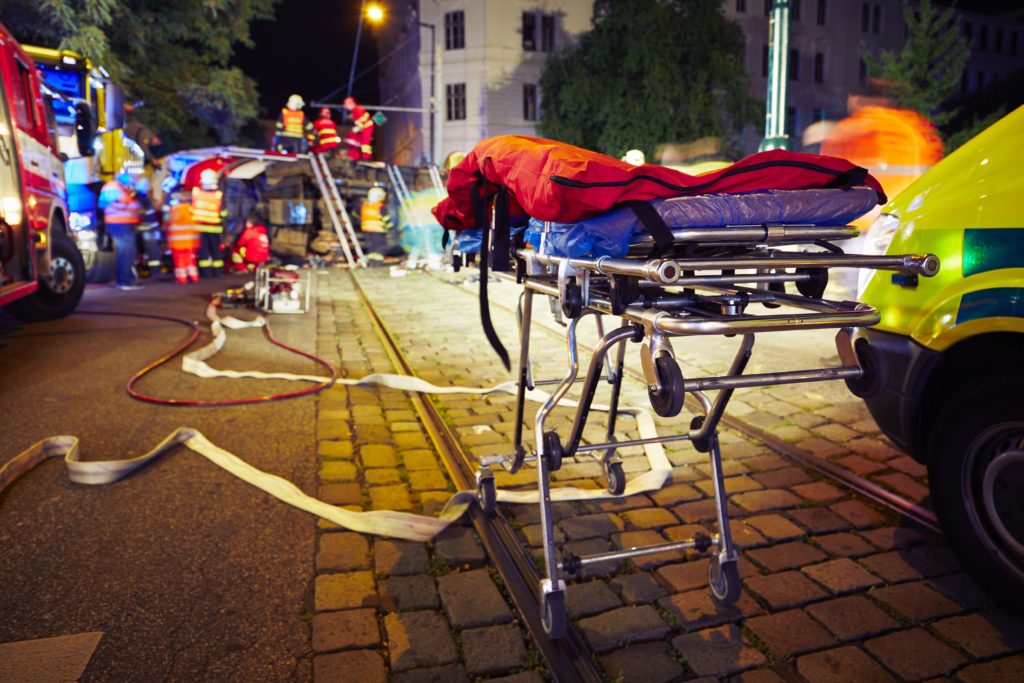
Collisions between pedestrians and motorists are a serious problem in the U.S. For instance, in 2020, an estimated 104,000 pedestrians were treated for non-fatal crash-related injuries in emergency departments across the country. Many more thousands were injured, but didn’t require emergency treatment and for more than 7,000 people, such treatment wasn’t enough to prevent a fatality. There is no single factor that is totally responsible for this alarming problem. Rather, the increasing rate of pedestrian-vehicle crashes that result in injuries or fatalities can be attributed to a number of influences.
Vehicle and Driver Factors
One of the biggest causes of pedestrian-vehicle collisions is driver error. Consumption of alcohol and driver distraction, for instance, are linked to thousands of pedestrian accidents every year. Speeding is another major contributor to crashes, increasing the chances of a collision because:
- Faster vehicle speeds make it harder for drivers to see pedestrians; and
- High speeds lower the amount of time that a driver has to avoid a crash.
Furthermore, the faster a vehicle is traveling, the more severe the injuries are likely to be for the pedestrian. For instance, a pedestrian struck by a vehicle moving at 40 miles per hour has an 85 percent chance of being killed, whereas this likelihood goes down to 45 percent for vehicles traveling at 30 miles per hour. The greater the pedestrian and vehicle traffic, the higher the chance that there will be a collision. This is reflected by the fact that the majority of pedestrian-vehicle collisions occur in urban areas. Finally, an increase in the use of larger vehicles, like light trucks and SUVs, both of which have raised bumper heights, make it more likely that a struck pedestrian will suffer more severe injuries.
Environmental Factors
Pedestrian-vehicle accidents occur when a physical environment encourages unsafe pedestrian or driver behavior, or fails to adequately ensure the separation of pedestrians and vehicles. For instance, the physical layout of a city, pedestrian routes, and crossing devices can encourage pedestrians to cross roads in unsafe situations. Most problematic physical environments involve some sort of design failure, including:
- A lack of crossing devices, like walk signs, crossing devices, or crosswalks;
- A lack of mid block crossing, which is implicated in as many as 55 percent of fatal pedestrian accidents;
- Overly narrow roads;
- Poorly timed signals; and
- A lack of sidewalks.
These problems can be further exacerbated by other factors, like poor weather conditions, which can affect visibility for both drivers and pedestrians. Having a thorough understanding of the many factors that can contribute to pedestrian accidents can help victims in their quest to identify who was responsible for an accident.
Liability for Pedestrian Accidents
The cause of an accident, whether driver error, vehicle malfunction, or problematic road design will play an important role in determining liability for a crash. If a lack of crossing devices, for instance, contributed to an accident, then it is likely that a city or state agency, or third party contractor employed by such an agency, could be held partially liable for an accident (in addition to the at-fault driver). A motorist who was texting while driving and struck a pedestrian at a marked crosswalk, on the other hand, could be held entirely liable for accident-related injuries. Similarly, a driver who was intoxicated at the time of an accident would bear full responsibility for a crash, being required to compensate an injured pedestrian for medical bills, lost wages, and pain and suffering.
Fortunately, even pedestrians who contributed in some way to an accident can still recover compensation for some of their losses. This is because Florida adheres to a comparative negligence standard, under which partially at fault parties can still recover damages, albeit in an amount reduced by their degree of fault in causing an accident. For instance, a pedestrian who was deemed ten percent responsible for an accident, could still recover a monetary award, although he or she could expect that amount to be reduced by ten percent.
Call Today for Help with Your Accident Case
If you or a loved one were hurt in a pedestrian accident, you are likely facing mounting medical bills, in addition to a great deal of pain and stress. At Dolan Dobrinsky Rosenblum Bluestein, our dedicated Miami pedestrian accident lawyers are here to help. We can conduct a thorough investigation into the cause of your accident and help you attempt to hold the responsible party accountable. Call us at 305-371-2692 to set up an initial consultation, or reach out to us, 24 hours a day, via online message.